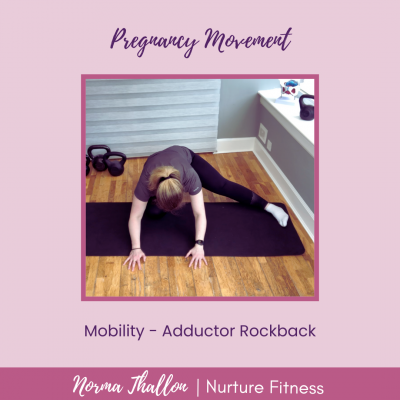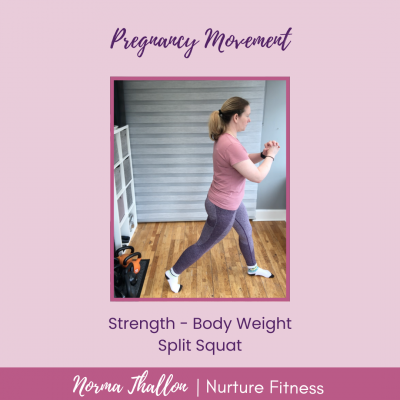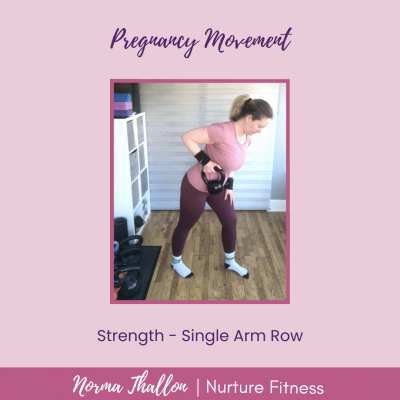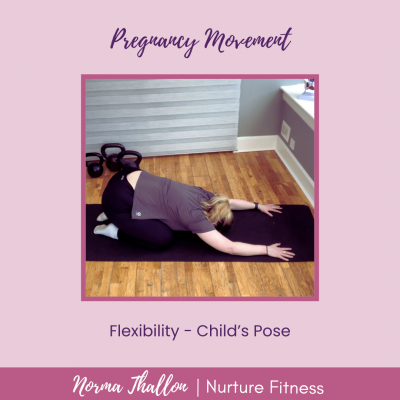What Exercises Are Safe To Do in Pregnancy? Part 3
By the third trimester, your body is doing some serious work. Your centre of gravity has shifted, your joints are looser (thank you relaxin hormone) , and simple things (like rolling over in bed) feel like an Olympic event. But movement—when done safely—can help ease discomfort, maintain strength, and prepare your body for labour and postpartum recovery.
The key? Prioritising mobility, strength, and flexibility with exercises that support your changing body. Your workouts may well look very different by the time you’ve made it this far, and that’s absolutely fine. This isn’t forever, it’s just until you get to meet your baby!
As always, safe movements are dependent on your body – so if you have a low-risk pregnancy with no underlying conditions or complications, here are four safe and effective movements to help you feel strong and mobile as you approach the finish line.
Safe Exercises For Pregnancy in Trimester 3
Remember that your warm up is super important. Don’t be tempted to skip it. Mobility movements are perfect for a warm up as they mobilise all the joints and muscles in your body, whilst also raising your core temperature and prepping your body for more intense movements.
1. Mobility Movement: Adductor Rock Back
What It Is
The adductor rockback is a gentle yet effective mobility exercise that helps open up the inner thighs and hips. As your body changes in the third trimester, keeping your hips mobile can make movements like walking, rolling over in bed, and even labor positions more comfortable.

To watch the video demonstration, click the link: https://youtu.be/dBe6IgLjrkw?si=N7emFNRd7GtKe1uc
How To Do It
- Start in an all-fours position with hands under shoulders and knees under hips.
- Extend one leg straight out to the side, keeping the foot flat on the ground.
- Keeping your back straight, slowly rock your hips back toward your heel, feeling a stretch in the inner thigh.
- Return to the starting position and repeat for 8–10 reps before switching sides.
What To Avoid
- Avoid rounding your lower back—keep your spine neutral.
- Don’t force the stretch; it should feel like a gentle opening, not pain.
- If your belly is in the way, try widening your hands for more space.
Why It’s Great
- Helps release tension in the inner thighs and groin, which can get tight from postural changes.
- Improves hip mobility, which is beneficial for daily movement and labor.
- Feels really, really good—especially after a long day on your feet!
This is a great movement to incorporate into your daily routine, especially if you’re feeling tight in the hips. Think of it as giving your inner thighs a much-needed sigh of relief.
2. Strength Movement: Bodyweight Split Squat
What Is It?
The bodyweight split squat is a fantastic lower-body exercise that strengthens your legs and glutes while improving balance. In the third trimester, maintaining lower-body strength can help with posture, reduce pelvic discomfort, and support your body as it prepares for labor.

To watch the video demonstration, click the link: https://youtu.be/z2chweoSRiA?si=tbVXI4k7poAqgyap
How To Do It
- Stand with your feet hip-width apart, then step one foot back into a staggered stance.
- Keeping your torso upright, lift the heel of the back foot and lower your back knee toward the ground while bending your front knee.
- Push through your front foot to return to the starting position.
- Repeat for 8–10 reps per side.
What To Avoid
- Avoid arching your lower back—engage your core to keep your spine neutral.
- Don’t let your front knee collapse inward; keep it in line with your toes.
- If balance is tricky, hold onto a chair or wall for support.
Why It’s Great
- Strengthens the glutes, quads, and hamstrings—muscles that support your changing posture.
- Helps with single-leg stability, which is especially helpful as your center of gravity shifts.
- Can reduce pelvic and lower back pain by improving overall strength.
This move is a simple but effective way to maintain strength in your legs without needing heavy weights. Bonus: it also makes standing up from the couch a little easier.
3. Strength Movement: Single Arm Neutral Row
What It Is
Your upper body does a lot during pregnancy—carrying, pushing, pulling, and soon enough, lifting a baby all day. The single-arm neutral row strengthens your back, arms, and shoulders, helping you maintain good posture and prevent aches.

To watch the video demonstration, click the link: https://youtu.be/KGZAXf4BhcI?si=f5t9kgarwseJDTb9
How To Do It
- Stand with one foot forward and one foot back, placing your front hand on your front leg for support.
- Hold a weight in your opposite hand, palm facing your body.
- Keeping your back straight, pull your elbow back, moving the weight up towards your hip.
- Lower it slowly and repeat for 8–12 reps before switching sides.
What To Avoid
- Avoid shrugging your shoulders—keep them down and relaxed.
- Don’t round your back—maintain a neutral spine throughout the movement.
- Use a weight that feels comfortable but still challenging.
Why It’s Great
- Strengthens the back, shoulders, and arms, which is crucial for carrying a baby postpartum.
- Helps counteract the rounded shoulder posture that can come from a growing belly.
- Improves functional strength for lifting, pushing, and pulling movements.
This exercise is a game-changer for keeping your back strong and ready for all the lifting you’ll be doing once your little one arrives.
4. Flexibility Movement: Child's Pose
What It Is
Child’s pose is a gentle, restorative stretch that helps relieve tension in the lower back, hips, and shoulders. It’s a go-to movement for relaxation and can be especially helpful for relieving end-of-day aches in the third trimester.

To watch the video demonstration, click the link: https://youtu.be/oO2kZa0ZaZ0?si=Tk0K5R5yMNcURyKb
How To Do It
- Kneel on the floor with your knees wide and your feet together.
- Sit your hips back toward your heels and extend your arms forward.
- Rest your forehead on the floor (or a pillow) and take deep breaths.
- Hold for 20–30 seconds, breathing deeply into your belly.
What To Avoid
- If your belly feels restricted, try placing a pillow under your chest for support.
- Avoid rounding your lower back too much—keep it comfortable.
- If knee discomfort arises, place a cushion under your knees.
Why It’s Great
- Stretches the lower back and hips, relieving common third-trimester tension.
- Promotes relaxation and deep breathing—helpful for managing stress and preparing for labor.
- Provides a moment of calm in what might be a hectic day.
This is one of those movements that just feels good—perfect for unwinding at the end of the day or as a gentle stretch anytime you need a break.
Incorporating These Moves into Your Routine:
Now that you have the exercises, let’s turn them into a functional workout. Here’s a simple way to incorporate them into your routine:
Adductor Rock Back:
2–3 sets of 8-10 reps per side
Bodyweight Split Squats:
3 sets of 8-10 reps per leg
Focus on controlled movements and using your glutes to power back up.
Single Arm Neutral Row:
3 sets of 8–12 reps per side
Use a weight that challenges you, but doesn’t make you feel like you’re about to collapse (balance, mama!).
Child’s Pose:
3 sets of 20–30 seconds
Really open your chest and feel that stretch deep in your shoulders and upper back.
Final Thoughts:
Staying active in the third trimester doesn’t have to mean intense workouts or complicated exercises. A combination of mobility, strength, and flexibility movements can help you feel strong, reduce discomfort, and support your body as it prepares for labour and postpartum recovery.
The key is to listen to your body—some days you’ll feel energised, and other days you might just want to stretch and breathe. Both are valid, and both are beneficial.
Try incorporating these movements into your routine, and most importantly, give yourself grace. Your body is already doing an incredible job—movement is just another way to support it.
Any questions or comments, let me know!
